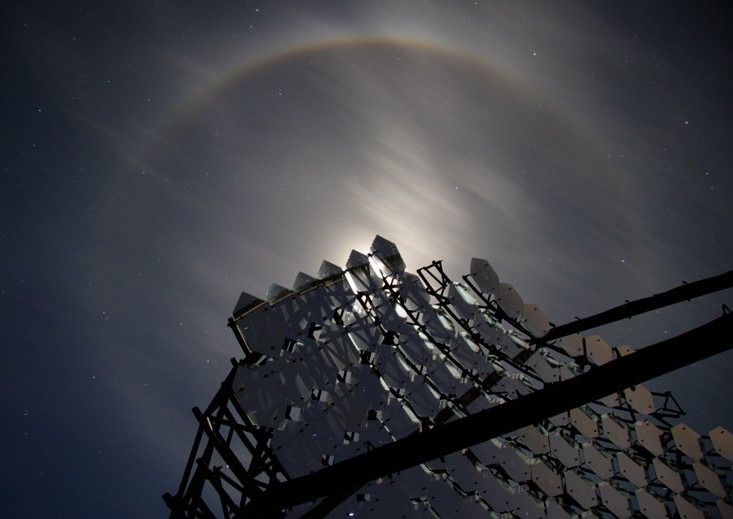Credit & Copyright: Gil Esquerdo
(Whipple
Observatory)
Explanation:
As a bright November Moon lit up the night sky last week,
Gil Esquerdo spotted this lovely Moon
halo overhead at
the Whipple Observatory on Mt. Hopkins, Arizona.
In the foreground, the structure and individual
component mirrors of Whipple's
10 meter gamma-ray
telescope actually block direct light from the
lunar disk, emphasizing the halo in
this dramatic view.
The halo was caused by ice crystals in the thin
high clouds above the observatory - crystals that are
hexagonal in shape
and produce the characteristic ring of
light with a 22 degree radius.
In fact, the ice crystal shapes are much like the
flat, hexagonal mirrors of the
specialized telescope in
the picture.
Used together the mirrors can collect brief flashes of
optical light caused by high-energy
gamma-rays impacting Earth's atmosphere.
1998 1999 2000 2001 2002 2003 2004 2005 2006 2007 2008 2009 2010 2011 2012 2013 2014 2015 2016 2017 2018 2019 2020 2021 2022 2023 2024 |
Январь Февраль Март Апрель Май Июнь Июль Август Сентябрь Октябрь Ноябрь Декабрь |
NASA Web Site Statements, Warnings, and Disclaimers
NASA Official: Jay Norris. Specific rights apply.
A service of: LHEA at NASA / GSFC
& Michigan Tech. U.
|
Публикации с ключевыми словами:
halo - кристаллы - атмосфера Земли - Луна - Черенкова-Вавилова излучение
Публикации со словами: halo - кристаллы - атмосфера Земли - Луна - Черенкова-Вавилова излучение | |
См. также:
Все публикации на ту же тему >> | |
